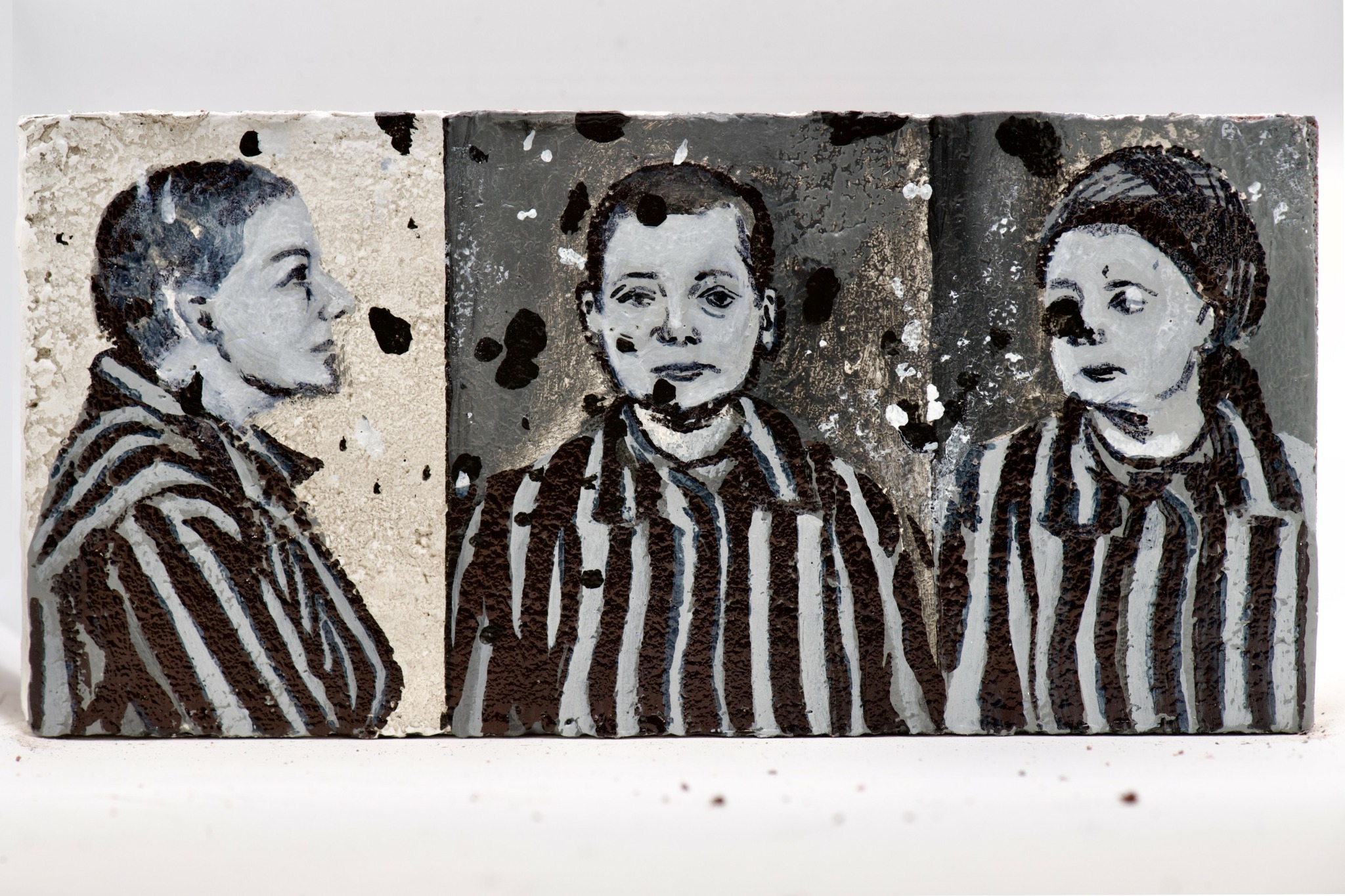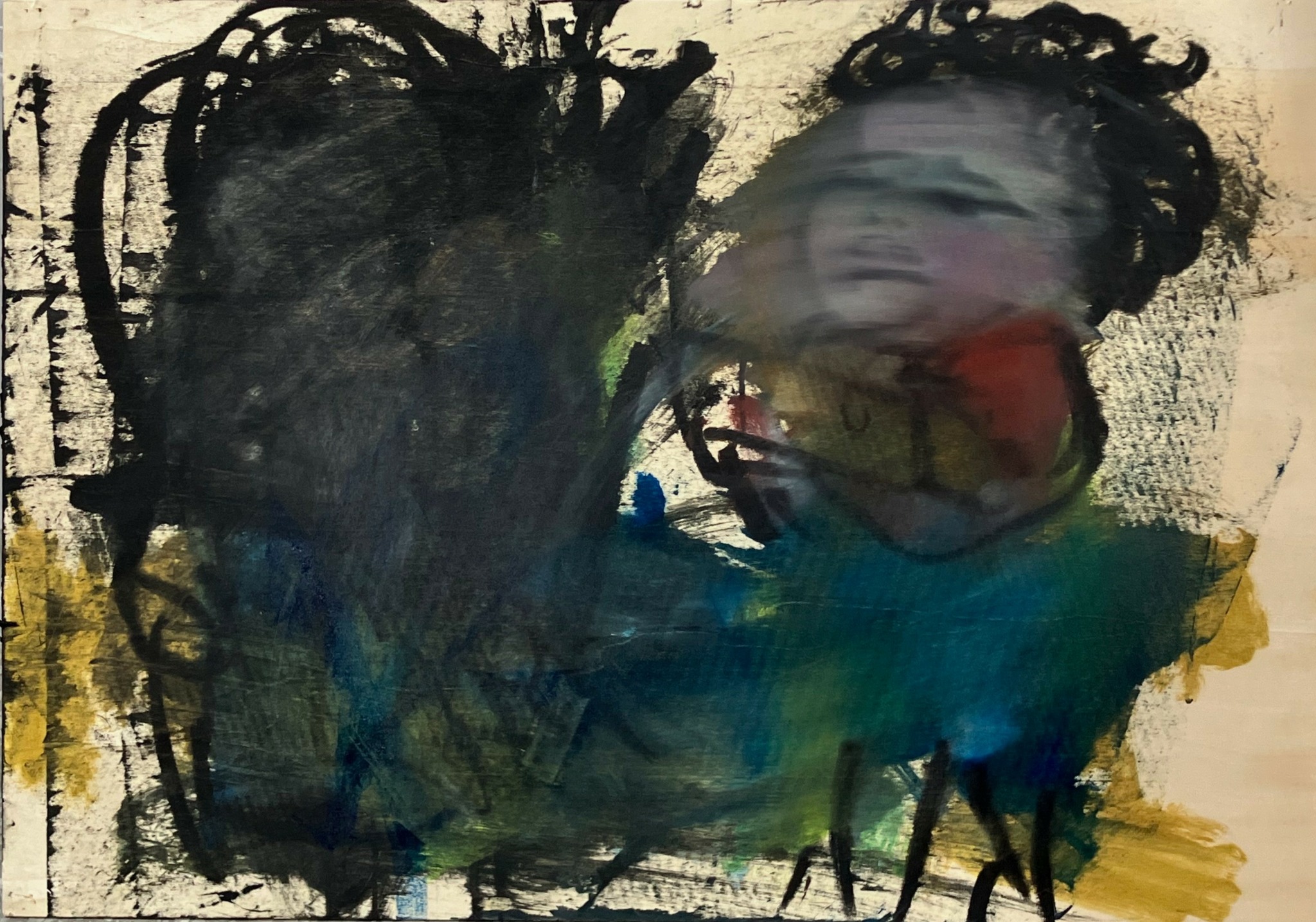We were lucky to catch up with Taizhi Chen recently and have shared our conversation below.
Taizhi, thanks for joining us, excited to have you contributing your stories and insights. What’s been the most meaningful project you’ve worked on?
The most meaningful project I’ve worked on is my senior thesis: painting over 240 portraits of Auschwitz prisoners on bricks and placing them throughout Manhattan, from 1st Street to 220th Street. I spent 11 months on this project. The inspiration came during the summer before my senior year, when I read Auschwitz: A Doctor’s Eyewitness Account. I remember one afternoon in particular when I was completely shaken by what I read. It haunted me for months. Eventually, I decided to dedicate my senior year to creating a project that honored the memory of Auschwitz victims.
After weeks of research and reflection, I developed the idea of painting prisoner portraits on bricks—objects both heavy and grounded, symbolizing burden and remembrance. While painting, I often felt as if the faces were looking back at me. That feeling made me approach the work with the utmost respect. I always washed my hands before handling the bricks and avoided any distractions—no music, no videos—just quiet focus. I used that time to meditate on life, death, and peace.
This project became more than an artwork. It was a period of personal transformation. It gave me space to reflect deeply, and it filled me with a profound and indescribable sense of respect and gratitude for life. It’s the largest and most significant project I’ve ever completed, and it has given me the confidence and vision to take on even greater challenges in the future.


Great, appreciate you sharing that with us. Before we ask you to share more of your insights, can you take a moment to introduce yourself and how you got to where you are today to our readers.
In high school, I couldn’t decide what to major in. I was torn between philosophy and art. I was drawn to philosophy because I was fascinated by all those deep, challenging questions. But the constant questioning and abstract thinking often gave me intense anxiety. One afternoon, while struggling with a particularly difficult reading, I opened a music app and saw a beautifully illustrated album cover. Somehow, just seeing it instantly lifted the tension I was feeling.
That moment changed everything. I realized I had always been an anxious child, and managing that anxiety had been a constant part of my life. If studying philosophy only intensified it, then it wasn’t the right path for me. Art, on the other hand, offered relief and freedom. Even a simple image, like that album cover, had the power to transform my anxiety into peace. I knew then that I wanted to make art that could do the same—liberate people, comfort them, or simply bring a smile to someone having a rough day.
The experience of being an international student further expanded my perspective. I began to see that every issue has many sides. What might be dismissed as negative or stereotypical in one culture could be seen as beautiful or meaningful in another. I want to bring that sense of openness into my work. This year, I hope to explore themes such as discrimination, peace, and freedom through my art.


We’d love to hear a story of resilience from your journey.
The hardest project I’ve worked on was painting over 240 portraits of Auschwitz prisoners on bricks and placing them throughout Manhattan.
At the beginning of the project, I didn’t have a studio. I painted the bricks in my small apartment, where I lived with two roommates who were not art majors. I had to move large quantities of dusty bricks into my room without disturbing them. My room was less than eight square meters, crammed with painting materials, my bed, and stacks of red bricks. Immersing myself in the horrific history of Auschwitz and watching harrowing documentaries left me emotionally drained. I often had nightmares and felt weighed down by the emotional intensity of the subject matter.
Every week, I carried heavy bricks to and from school on my back. Because of safety concerns, I was repeatedly removed from classrooms by campus security when I tried to work in empty rooms on weekends. I applied for a studio space again and again, but was denied each time. It wasn’t until five months into the project that I was finally granted one.
Even with a studio, the physical labor of painting and transporting the bricks was exhausting. On top of that, I had to constantly deal with suspicion and interference from school security. They would say things like, “You can’t bring that cart into the elevator—you need to carry the bricks up in small bags,” or “Are you really a student? Show me your ID.” Sometimes they insisted, “That’s not enough. Take me to your studio so I can verify.” Or, “You can’t leave the bricks in the hallway.” I complied with all of it, quietly.
After finishing the paintings, I decided to place all 240 bricks throughout Manhattan, from 1st Street to 220th Street, so anyone could pick one up for free. It was August, and the weather was hot. It was around 86℉ and I had to do it all by myself. Using just a backpack and a suitcase packed with bricks. Each brick weighs about 2.5 kg. I transported them by walking and biking for the first 50 blocks. Then I used public buses for another 60 blocks, and finally finished the rest by subway and Uber.
I pulled the heavy bricks through the streets under the blazing sun, drenched in sweat. On some days, sudden rainstorms hit, but I had no choice but to keep moving forward with the bricks on my back. What kept me going were the determination to honor the subject. Looking back now, I’m incredibly proud of myself and thankful I didn’t give up. I’m also deeply grateful for the encouragement and support of my family and friends.


Is there a particular goal or mission driving your creative journey?
The Chinese school system was, and still is, extremely strict and competitive. During middle and high school, the constant pressure to perform took a toll on my mental health. I often felt overwhelmed, anxious, and unconfident. Looking back on those years, I frequently ask myself: What did I need back then? What do teenagers under similar pressure need today to feel less burdened and more hopeful about life?
Art became one of the most important things that offered me relief. Discovering the work of artists like Marcel Duchamp gave me a sense of freedom and permission to think differently. His art encouraged me to question rigid systems and see meaning beyond conventional boundaries. It brought me comfort and mental clarity during difficult times.
I want my own art to do the same for others. I hope my work can serve as a source of peace, encouragement, or even just a moment of lightness for people going through stress, especially young people navigating the same kinds of pressures I once faced.
Contact Info:
- Instagram: taizhistudio
- Other: rednote:taizhistudio
















